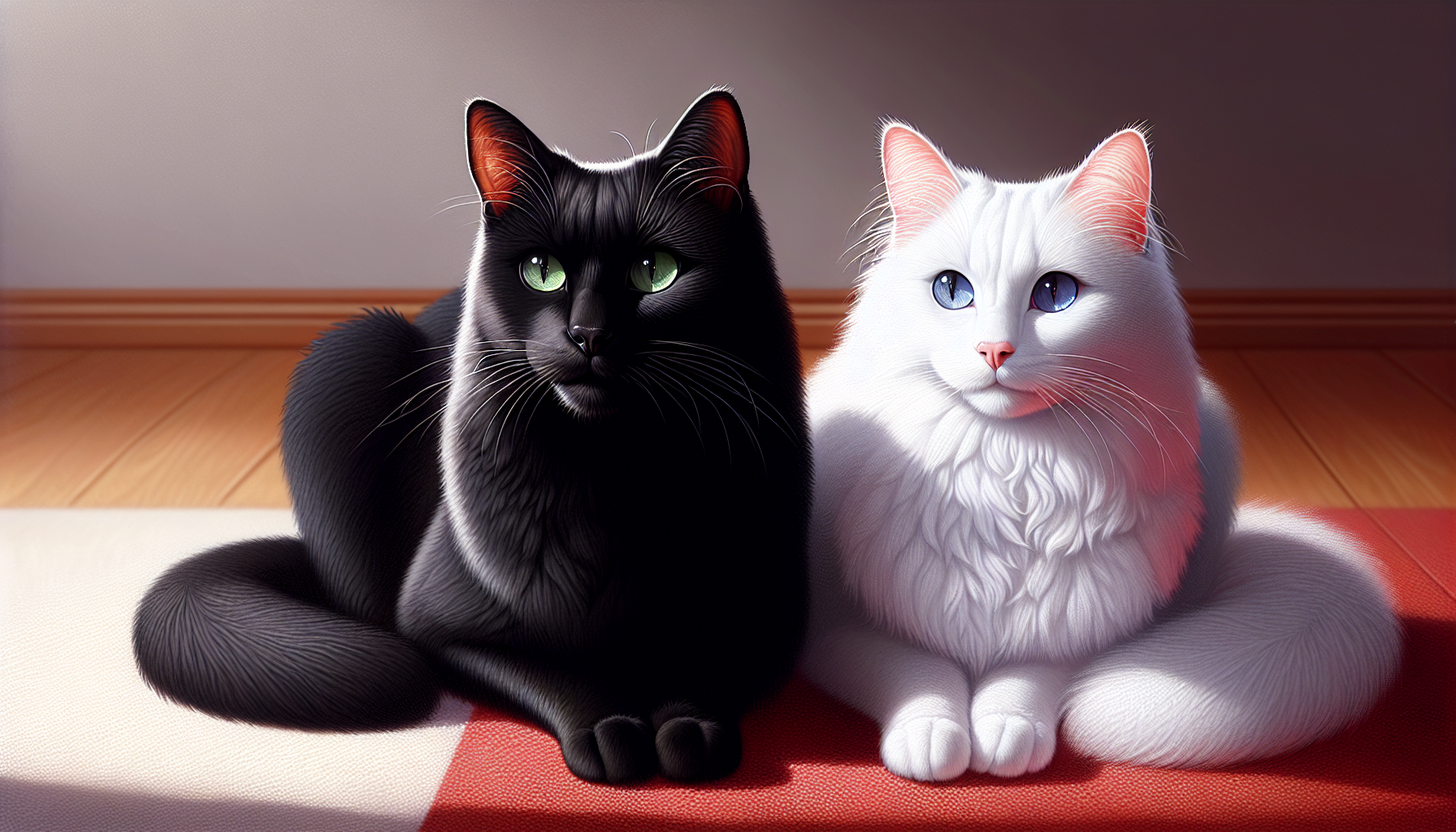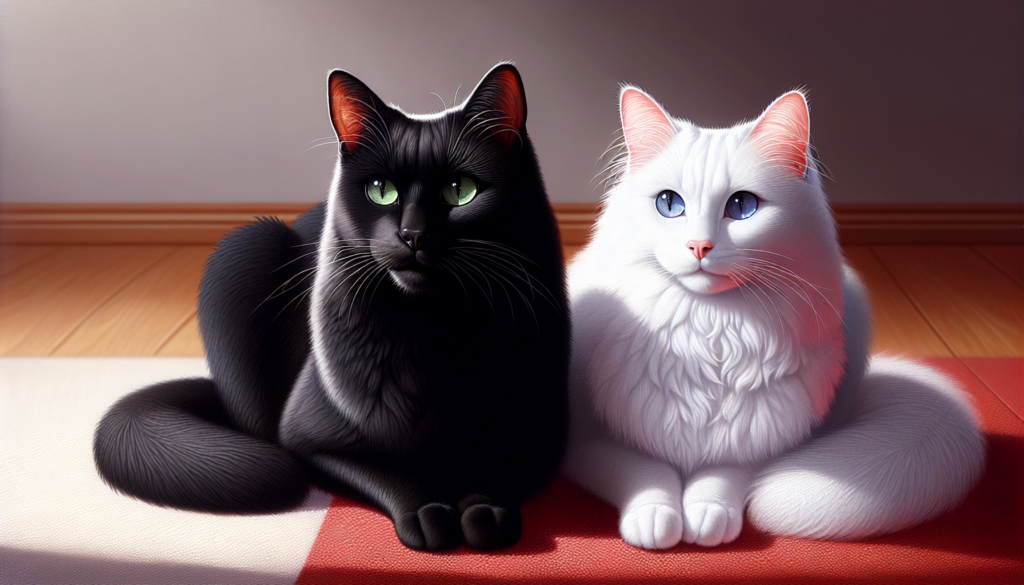Introduction
Have you ever wondered why black and white cats seem to have such unique personalities compared to other felines? It’s almost as if they carry a special charm that sets them apart from their peers. From the striking contrast of their coats to their playful and affectionate nature, these kitties are truly one-of-a-kind. But did you know there are over ten distinct breeds of black and white cats, each with its own quirks and characteristics? In this guide, we’ll explore the top 10 black and white cat breeds, helping you find the purr-fect match for your home [[1]].

Overview
Black and white cats aren’t just visually stunning; they’re incredibly diverse in personality and behavior. Whether it’s the playful American Shorthair or the elegant Tuxedo Cat, these breeds offer something for everyone. Caring for a black and white cat is relatively easy, requiring basic grooming, proper nutrition, and lots of love. Depending on the breed, some may need more attention than others, but all will reward you with years of companionship. Owning a black and white cat can be a delightful experience, though it does come with responsibilities like daily feeding, weekly grooming, and regular vet visits.
Essential Needs for Black and White Cats
To ensure your black and white cat lives a happy and healthy life, here are some essential needs:
- Food: High-quality protein-rich diets (wet or dry food) are crucial for maintaining energy levels and overall health. Wet food is often recommended because it provides hydration, while dry food helps clean teeth.
- Grooming Supplies: Regular brushing keeps their coat shiny and reduces shedding. Invest in a good brush, nail clippers, and ear cleaning tools. For example, the Cornish Rex has delicate skin that requires gentle care [[4]].
- Toys and Enrichment Activities: Interactive toys keep cats mentally stimulated and physically active. Consider puzzle feeders, laser pointers, or feather wands to entertain your furry friend.
- Healthcare: Schedule regular vet check-ups, vaccinations, and dental cleanings. Early detection of potential health issues can save both money and heartache down the road.
Substitutions and Variations
If your cat prefers certain textures or flavors, try switching between wet and dry foods. Some cats might enjoy fish-based diets, while others prefer chicken or turkey. Similarly, grooming routines can vary depending on the breed—long-haired breeds like the Persian require more frequent brushing than short-haired ones like the Manx [[3]].
Step-by-Step Care Guide
Caring for a black and white cat involves creating a structured routine. Here’s how you can break it down:
Daily Tasks:
- Feed your cat twice a day, following portion guidelines.
- Spend at least 15 minutes playing with them using interactive toys.
- Check their water bowl to ensure it’s always full.
Weekly Tasks:
- Brush their coat thoroughly to prevent matting. This is especially important for long-haired breeds like the Maine Coon [[5]].
- Clean the litter box regularly to encourage good hygiene habits.
- Inspect their ears for signs of infection or dirt buildup.
Monthly Tasks:
- Trim their nails carefully to avoid overgrowth or splitting.
- Schedule a quick health check-up at home, looking out for any unusual symptoms.
- Rotate their toys to keep playtime exciting.
Bonding and Enrichment Activities
Building a strong bond with your black and white cat doesn’t have to be complicated. Start by dedicating quality time each day to interact with them. Teaching tricks like “high-five” or “sit” not only strengthens your relationship but also stimulates their mind. Puzzle toys and treat-dispensing balls are great ways to challenge their problem-solving skills. Additionally, providing scratching posts and climbing trees allows them to express natural behaviors safely.
Health and Wellness Tips
Maintaining your black and white cat’s health starts with preventative care. Regular vet visits help monitor their weight, detect early signs of illness, and keep vaccinations up-to-date. Dental care is equally important; brushing their teeth weekly prevents gum disease and bad breath. Keep an eye on common health issues specific to certain breeds, such as polycystic kidney disease in Persians or hypertrophic cardiomyopathy in Maine Coons [[8]].
Storage and Make-Ahead Tips
Organizing pet supplies makes caring for your black and white cat easier. Store food in airtight containers to preserve freshness and prevent pests. Designate a drawer or shelf for grooming tools, medications, and first aid kits. Preparing emergency kits with contact information for your vet and nearby animal hospitals ensures you’re ready for unexpected situations.
Variations in Care Based on Age and Breed
The needs of black and white cats change as they grow older. Kittens require more frequent feeding and playtime to support rapid growth, whereas adult cats focus on maintaining weight and staying active. Senior cats may develop joint pain or mobility issues, so providing soft bedding and ramps can make life more comfortable for them. Different breeds also have varying requirements—for instance, the Scottish Fold’s folded ears need extra attention to prevent infections [[9]].
Conclusion
Whether you’re searching for a playful companion or a calm lap cat, black and white cats offer endless possibilities. Use this guide to explore the top 10 breeds and discover which one fits your lifestyle best. Remember, every cat is unique, so don’t hesitate to experiment with different care techniques until you find what works best for both you and your feline friend. Above all, cherish the joy and companionship these wonderful creatures bring into your life.
FAQs
Q: What are the best foods for black and white cats?
A: Opt for high-protein wet or dry foods tailored to your cat’s age and activity level. Wet food is excellent for hydration, while dry food aids in dental health.
Q: How often should I groom my black and white cat?
A: Grooming frequency depends on the breed. Short-haired breeds like the American Shorthair need weekly brushing, while long-haired breeds like the Persian require daily attention [[6]].
Q: Are there any specific health issues I should watch out for?
A: Yes, certain breeds are prone to genetic conditions. For example, Persians may suffer from polycystic kidney disease, and Maine Coons could develop hypertrophic cardiomyopathy. Regular vet check-ups help catch these issues early.
Q: Can black and white cats live happily with other pets?
A: Absolutely! With proper introductions, most black and white cats can coexist peacefully with dogs and other cats. Supervised interactions and gradual exposure are key to successful multi-pet households.
By following these tips and understanding the unique traits of each breed, you’ll be well-equipped to provide a loving home for your new black and white kitty. Enjoy the journey!

